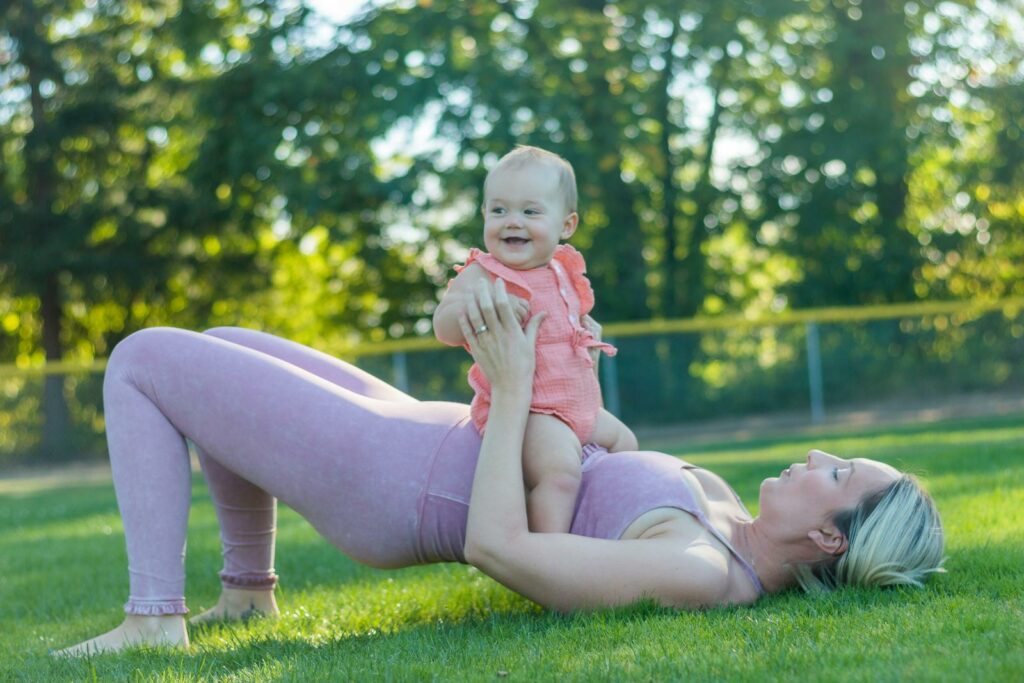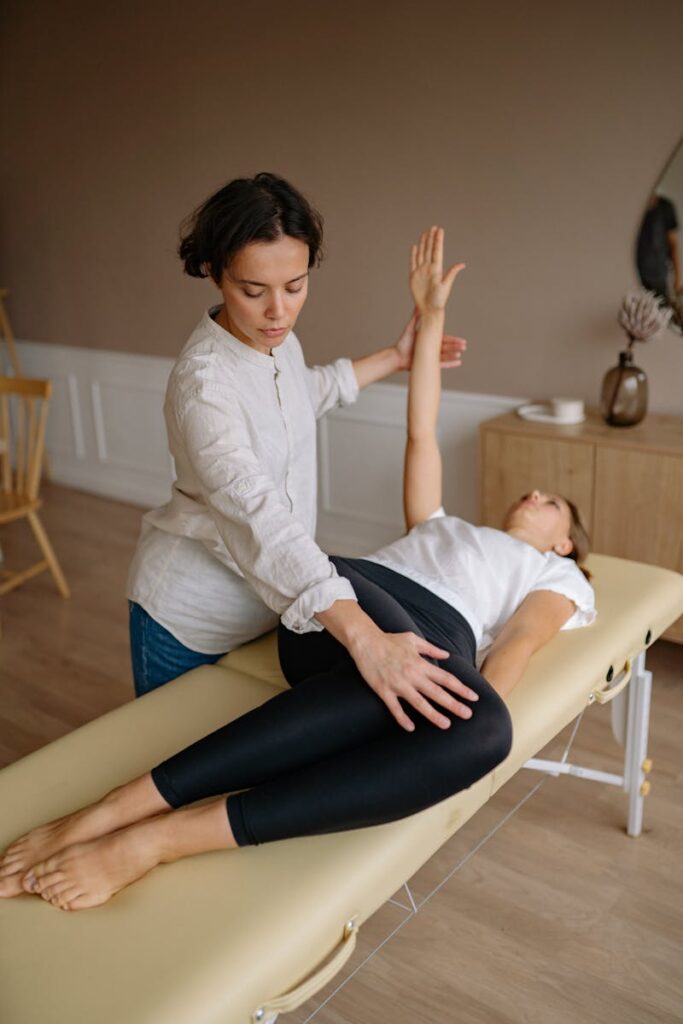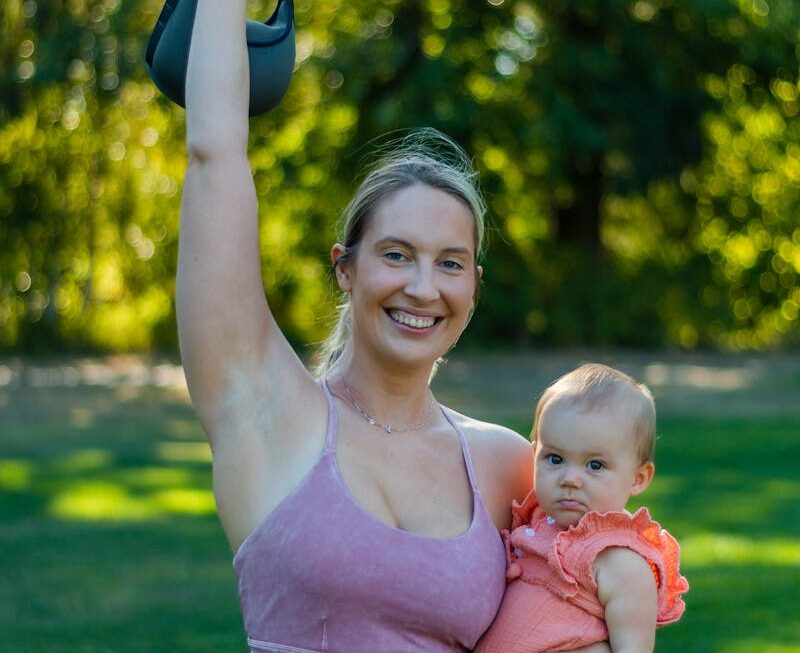Your body postpartum definitely feels different from your body prenatal, and that’s fine. After all, you did, just leave the delivery ward with a baby in hand, no less.
As a new mother ready to regain your strength, reconnect with your body, and care for your newborn, postpartum exercises are the way to go.

Postpartum exercises are gentle exercises mothers could try at home to regain their strength and confidence while taking care of their overall well-being.
And the best thing about postnatal exercises is that they can be done from the comfort of your home which works for you and for the baby too.
In this post, we’ll explore the benefits of postpartum exercises, how to get started safely, and practical tips to add them to your daily routine.
Benefits of these postpartum exercises.
Starting a postpartum exercise routine offers you more than just physical recovery—it supports your well-being, helps you as a mom regain your strength, boosts your energy levels, and your mood.
Here are key benefit of afterbirth exercises;
- Speed-Up Recovery: These exercises help strengthen weakened muscles, especially in the core and pelvic area, aiding in faster recovery after childbirth. They also improve circulation, which can reduce swelling and inflammation.
- Improves Mood and Mental Health: Exercise releases endorphins, the body’s natural “feel-good” hormones. This helps fight postpartum blues and reduces stress and the risk of postpartum depression.
- Supports Weight Management: Gentle exercises combined with a balanced diet can help with gradual weight loss, and bring back pre-pregnancy fitness in a healthy and sustainable way.
- Enhances Overall Strength and Stamina: Carrying a baby, lifting strollers, and managing daily tasks require strength. Postpartum workouts help rebuild endurance and muscle tone, making motherhood physically easier.
- Encourages a Positive Body Image: By focusing on strength and well-being rather than just appearance, postpartum exercise helps mothers appreciate their bodies and feel more confident in their postpartum journey.
Tips/Guidelines for starting after-birth exercises.
Your kind of birth according to the American College of Obstetrics and Gynaecology, will determine what sort of workout plan is better for you and how long it’ll take before you’re able to start a proper routine.
Generally, it is advised that you wait a total of six weeks and receive the postpartum check from your doctor before you begin but if you had a more stressful birth, then consult your doctor to avoid causing further injury and prolonging your recovery period.
If you’ve been given the all-clear to start a routine, then following these tips would be advised;
- Start Slow: Don’t rush into the routine at once. Give yourself time to adjust to the routine.
- Stay Hydrated and Nourished: Drink plenty of water, especially if you’re breastfeeding and you should eat a balanced diet rich in protein, healthy fats, and carbs.
- Get enough sleep (as much as possible with a newborn.
- Listen to your body: If you feel even slight pain, nausea, or dizziness, stop the routine and take a break.
Keep these tips in mind when starting any postnatal exercise. Understand that your body is still in recovery phase and we want it to heal as fast and as safely as possible. Going overboard can increase the risk of other complications arising so be careful.
9 Postpartum exercises to start from home.

To get the most out of both worlds-taking care of your newborn, exercising and any other tasks you may have for the day, these nine exercises are exercises you can do simply from the comfort of your home.
No need to go anywhere.
And in my opinion, I’m sure the baby would love that too.
- Stationary Jogs: In a particular position, jog for about ten to thirty minutes everyday.
- Walking: Simple 10 or 15- minutes walks everyday round your house. This will prepare you for the more intensive exercises.
- Side lying leg lifts: Lay on your side with legs touching and your arms on your waist for support. Lift one leg up and keep it raised in the air to the count of ten lower it back down but not touching the other. Repeat on the other leg. Repeat all 10-15 times.
- Kegels: You might be familiar with this from your antenatal sessions. Squeeze your pelvic muscles like you’re stopping the flow of urine, hold for about 10 seconds and then release. Repeat this 10-15 times.
- Pelvic Clocks: Lay on your back with your knees bent and feet planted on the floor. Imagine a clock on your pelvis starting from 12 and rotate your hips to 3, 6 and then 9 clockwise. Repeat this counterclockwise and repeat all 10-15 times.
- Wall sits: Stand with your back against a wall and your feet shoulder-width apart. Slide down the wall till your knees are bent at a 90° angle and then keep it up for about six seconds while engaging your pelvic muscles. Repeat about 3 times.
- Squats: Stand with your feet shoulder-width apart, slowly lower down to a squat with your arms outstretched and your feet behind your toes keeping your back straight. Push up to standing and repeat 10 times.
- Pelvic tilts: Lay on your back with your knees bent and feet flat on the floor. Tilt your pelvis upwards then backwards again, repeating the motion about 10-15 times.
Adding these simple exercises into your daily routine can help you regain strength, improve flexibility, and improve your well-being—all without having to leave your home. Start at your own pace, stay consistent, and enjoy the process of feeling stronger every day.
In Conclusion,
The postpartum journey is definitely not an easy one but adding these 9 gentle exercises into your routine can make a big difference in how you feel—physically, mentally, and emotionally.
By starting slow, listening to your body, taking breaks when necessary, eating healthy and , and staying consistent, you’ll gradually regain your strength and your confidence.
Remember, your motherhood journey is unique and it’s not the same with everyone else’s, so be patient and kind with yourself and celebrate every small progress you make. Most importantly, enjoy this special time with your baby while taking care of your own well-being.
FAQ
It’s advised to start after six weeks but consult your healthcare provider too.
These exercises do help in weight management.
There are various reasons why postpartum depression can happen but moving your body daily can help reduce depressive thoughts.
About 30 days should give you an idea if it’s working but you can do them for as long as you’d like.
